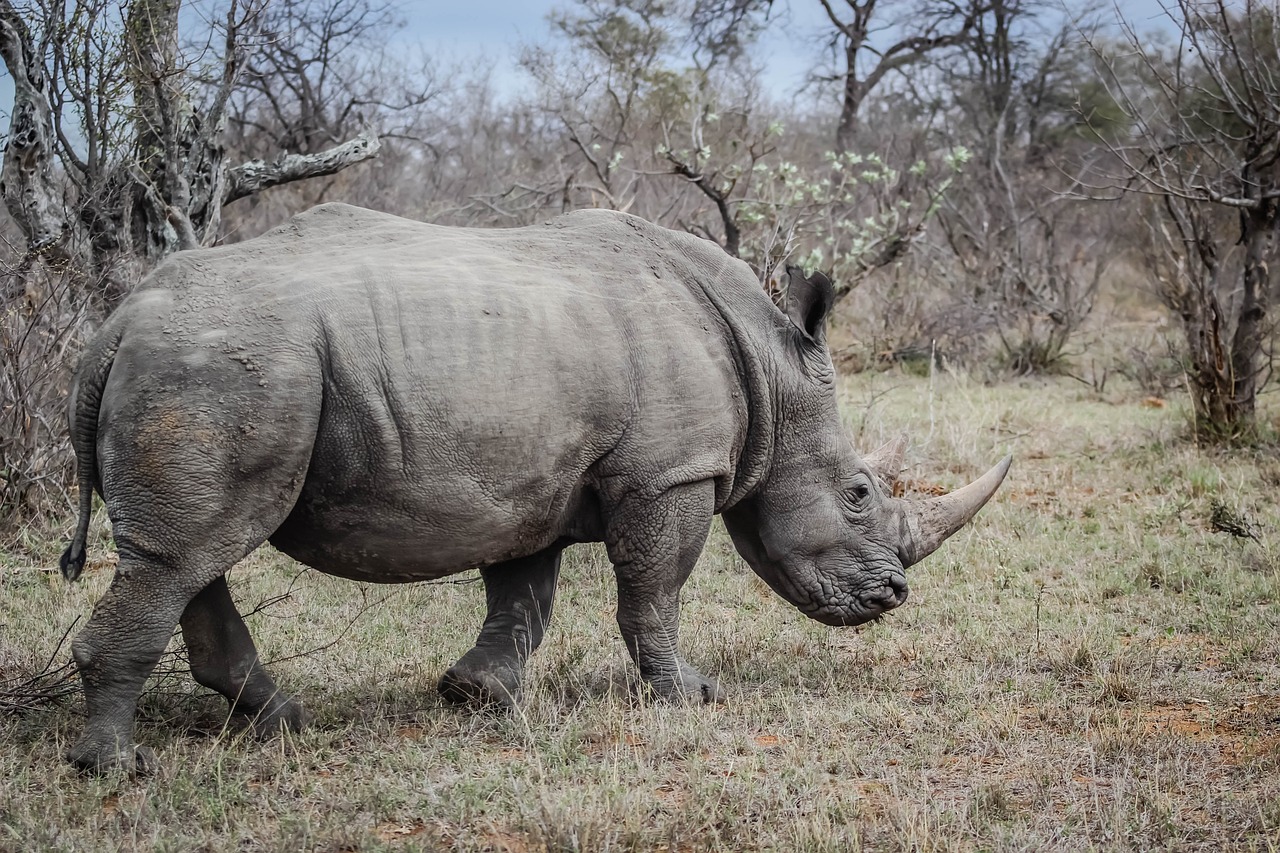Rhinoceros
Southern White Rhinoceros
Class :Mammalia (Mammals)
Scientific Name : Ceratotherium simum simum
FAMILY : Rhinocerotidae
SPECIES : Simum Simum
GENUS : Ceratotherium
ORDER : Perissodactyla
About
What's in a name?
I am a Rhinoceros.The rhinoceros looks as though it has lumbered into our time from some primeval era. Its heavyset body stands on sturdy legs like tree trunks. Its eyes peer from a massive head that tapers to that battering ram of a horn. In our imaginations, the rhino is the embodiment of brute strength. Yet most of the time this fearsome creature is content to browse peacefully on vegetation.
The rhino’s lineage is an ancient one—its ancestors walked the Earth 55 million years ago. One of these ancestors, the paraceratherium, was 25 feet (7.6 meters) long and 18 feet (5.5 meters) high at the shoulder, the largest land mammal ever known. Throughout the eons, close to 100 known rhinoceros species have existed. Today, only five species continue the line: two native to Africa and three native to Asia.
Threats
Because of our precarious status, the southern white rhinoceros is listed in Appendix II of CITES, which regulates trade to ensure it is sustainable and does not threaten our survival. We are also listed as 'Near Threatened' on the IUCN Red List, highlighting the urgent need for conservation action.
Although our population has seen some recovery due to intensive conservation efforts, ongoing protection is vital. Detailed studies on our behavior, habitat use, and breeding patterns are crucial to develop effective management strategies. Education and awareness programs are essential to garner public support and inform communities about the importance of our conservation. We are thankful for the efforts of numerous wildlife reserves and organizations dedicated to our protection, such as the Kruger National Park and private conservancies in South Africa. Conservation workshops, along with engaging local communities in anti-poaching efforts and sustainable practices, play a pivotal role in ensuring our continued survival. By fostering a collaborative approach, we can enhance the prospects for the southern white rhinoceros and other endangered species sharing our habitat.
Conservation Action
With the constant growth of human settlements, human and hippo territories frequently overlap, and these encounters are on the rise. Projects such as the building of dams or the diversion of water for agriculture often have disastrous impacts on natural waterways and the hippos that depend on them.
Even more devastating to hippo populations is the trade in illegal ivory. Following the 1989 ban on elephant ivory, demand for hippo ivory sharply increased. The large canines that hippos use to protect themselves are made of the same material as elephants’ tusks. In fact, they are slightly softer and easier to carve than elephant ivory, making them even more appealing. As a result, hippo numbers are rapidly decreasing. If hippos were to disappear completely, the effect on their habitat would be catastrophic. The large amount of waste hippos produce fertilizes the African ecosystem, and many fish eat the dung and feed on the small parasites that live on the hippos’ skin.
Life Span
40 to 45 years
Young
Gestationm : 15 to 16 months
Number of young at birth : Usually 1; twins are rare
Weight at birth : 88 to 140 pounds (40 to 64 kilograms), depending on species
Age of maturity : 5 to 6 years for females; 7 to 8 years for males
Size
Length : Largest - white rhino, 12 to 13 feet (3.7 to 4 meters); smallest - Sumatran rhino, 8 to 10 feet (2.5 to 3 meters)
Height : Tallest - white rhino, up to 6 feet (1.8 meters); shortest, Sumatran rhino, up to 4.8 feet (145 centimeters) at the shoulder
Weight : Heaviest - white rhino, 5,000 pounds (2,300 kilograms); lightest - Sumatran rhino, 1,765 pounds (800 kilograms) average
Fun Facts
Do rhinos really put out fires in the wild? This is a popular legend that has inspired scenes in movies, descriptions in stories, and even the names of firefighting units, but there have been no actual recorded accounts of this happening.
White rhino males can be persistent, with courtship lasting 5 to 20 days
Rhinos are grazers. Their wide, square upper lips are adapted for feeding on grass.
The southern white rhinoceros is the largest species of rhinoceros and the second-largest land mammal after the elephant. Despite their massive size, these gentle giants are known for their surprisingly social behavior. They often form groups called 'crashes,' which can consist of up to 14 individuals, mostly females and their calves. These social groups help them protect each other and navigate their savanna habitats more effectively
GALLERY




